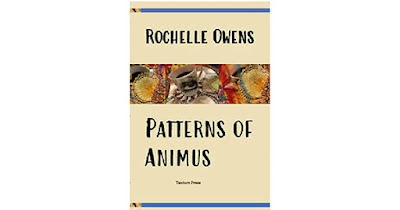When Rochelle Owens’s play, Chucky’s Hunch, was first performed Off-Broadway in 1981, critics lauded what they expressed as a tour-de-force performance by the actor playing Chucky, and they took the plot at face value. The play, which is a long dramatic monologue by an aging man triggered by the news that the second of his three ex-wives has won the lottery, takes the audience into a fascinating psychological odyssey. On the face of it, the play is simply about the embittered rantings of a failed Abstract Expressionist artist whose grandiose plans took him nowhere except into penury and bad health, as he lives with his 85-year-old mother somewhere in upstate New York. He reads his letters to Elly, his ex-wife, to the audience, and in doing so, expresses a range of thoughts and feelings, ranging from rageful recriminations to sentimental recounting of the times that he and Elly spent together, and his observations of her behavior. The narrative is a straightforward epistolary one, punctuated by a framed tale (The Snake and the Porcupine).
 |
| Chucky's Hunch is featured in this anthology. |
However, when looking more closely at the structure of the play, and then relating it to her other works, particularly her long poems, it becomes clear that the structure is one of repetition and interweaving, just as she has done in her brilliant “Black Chalk,” “Patterns of Animus” and “The Aardvark Venus.” As in those poems and others, there is an apocalyptic intensity that envelopes the reader with a sense of creeping horror at observing the protagonist’s existential nihilism that insists on destructive behavior and an ineluctable journey toward self-erasure. It is good to note that one can read the play for free via the Internet Archive (https://archive.org/details/wordplays200perf/mode/2up) although it is necessary to create an account and borrow it online.
The release of a video version in 2024, with Charles Berliner as Chucky, music by Marcia Kravis, video editing by Ellen Reynolds, and produced by Rochelle Owens, enables the audience to see a darker and more intimate version (https://youtu.be/OZdRLyXTNbI?si=F5wzMoBLzhhjwnYu). As a narrator, Chucky could not possibly be more unreliable. He flings words like the Abstract Expressionist flings paint, and it is necessary for the reader to find the patterns that make the deeper meaning, which is not really about Elly and her perceived slights to Chucky, but more about fatal “dances” (like the fabled Tarantella) of those who fall in love with each other, and in their dance of love, they toy with the parallels between love and death. Eros is held up as a life force in popular culture, but for Owens, Eros gives way to Thanatos, and the death-drive animates the various love dances / erotic tarantellas that weave in and out of the play.
Love-Death Dance 1: Chucky and Elly. Chucky reminisces about his time with Elly and the items of clothing he purchased for her. Their life together was something he now views with a combination of sweetness and bitterness, a relatable pain for anyone reflecting on failed relationships of the past. Images of a bright-white smile framed by carmine-red lipsticked lips further eroticize the narrative.
Love-Death Dance 2: Characterized as an impecunious and unmotivated bum, Chucky mooches off his 85-year-old mother, who horrifies him with the relations she has with Chester, her 82-year-old boyfriend. Depicted in graphic terms, the discordant notion of a couple approaching death carrying on as though they were teenagers is deeply unsettling to Chucky.
Love-Death Dance 3: Mother and son have a close relationship, one fraught with contradictions. Chucky describes how he chews his mother’s food for her as an Eskimo mother would chew food for her baby, which may seem potentially kind-hearted except that she lost her teeth because he hit her.
Love-Death Dance 4: Chucky’s only friend is his dog. The dog was killed, however, because it came between the amorous and deadly contortions of a porcupine and a snake. Their passion killed not only Chucky’s only living friend, but also each other. As a female voice narrates the frame-tale, images of a snake about to strike and a young porcupine fill the screen.
Love-Death Dance 5: Chucky’s tarantella with his own mind starts at the beginning of the play, and it weaves in and out of a kaleidoscope of emotions. They take him around in colorful, expressive effusions of emotion and reminiscences, but ultimately, the audience sees him as on a path to madness. When he disappears without a trace, the tarantella takes its final frenzied spin. The impressions are emphasized by the juxtaposition of images of seagulls feeding on trash piles.
Chucky complains that Elly never answers his letters, and he resents the fact that she is not only surviving, but is prospering, thanks to winning the lottery. She has gone on to live and thrive in the modern, changing world. Chucky’s world is one that resonates with medieval times – with echoes of the earthiness of Chaucer’s Canterbury Tales and the resignation of Boethius in The Consolation of Philosophy, and the aleatory movements of the Wheel of Fortune. The still photos and collages in the film form a backdrop behind the performer, and they resonate with the words, not so much depictions but visual metaphors. The soundtrack, featuring sombre music, seagull cries, and more.
In the end, Chucky psychologically juxtaposes himself in a final dance with the memory of the successful Elly, and in that final dance, he generates more self-destructive energy and pathos, leaving the audience staring into the “filthy maw” of an oblivion of one’s own devising, forged from the dances of “love-death” which left him with little more than shame and regret about his life. And thus Chucky hits home. Chucky is Everyman.
---Susan Smith Nash, Ph.D.





